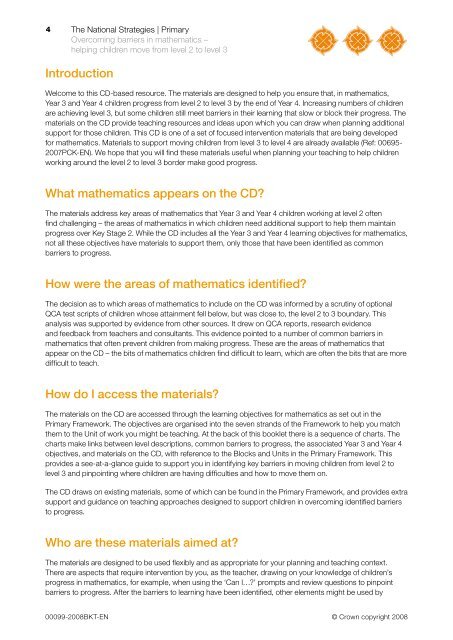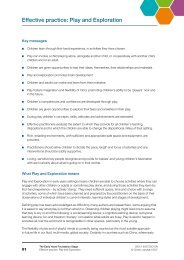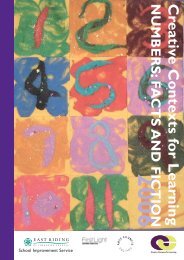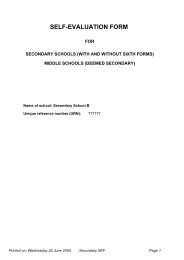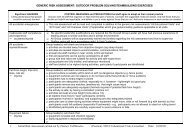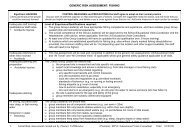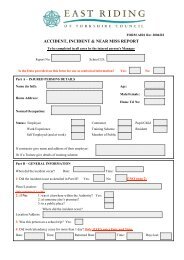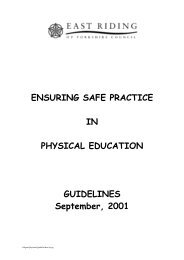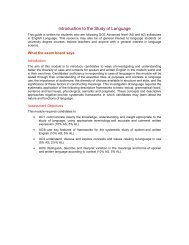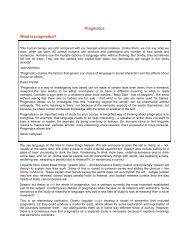Overcoming barriers in mathematics - helping children move from ...
Overcoming barriers in mathematics - helping children move from ...
Overcoming barriers in mathematics - helping children move from ...
Create successful ePaper yourself
Turn your PDF publications into a flip-book with our unique Google optimized e-Paper software.
4 The National Strategies | Primary<strong>Overcom<strong>in</strong>g</strong> <strong>barriers</strong> <strong>in</strong> <strong>mathematics</strong> –help<strong>in</strong>g <strong>children</strong> <strong>move</strong> <strong>from</strong> level 2 to level 3IntroductionWelcome to this CD-based resource. The materials are designed to help you ensure that, <strong>in</strong> <strong>mathematics</strong>,Year 3 and Year 4 <strong>children</strong> progress <strong>from</strong> level 2 to level 3 by the end of Year 4. Increas<strong>in</strong>g numbers of <strong>children</strong>are achiev<strong>in</strong>g level 3, but some <strong>children</strong> still meet <strong>barriers</strong> <strong>in</strong> their learn<strong>in</strong>g that slow or block their progress. Thematerials on the CD provide teach<strong>in</strong>g resources and ideas upon which you can draw when plann<strong>in</strong>g additionalsupport for those <strong>children</strong>. This CD is one of a set of focused <strong>in</strong>tervention materials that are be<strong>in</strong>g developedfor <strong>mathematics</strong>. Materials to support mov<strong>in</strong>g <strong>children</strong> <strong>from</strong> level 3 to level 4 are already available (Ref: 00695-2007PCK-EN). We hope that you will f<strong>in</strong>d these materials useful when plann<strong>in</strong>g your teach<strong>in</strong>g to help <strong>children</strong>work<strong>in</strong>g around the level 2 to level 3 border make good progress.What <strong>mathematics</strong> appears on the CD?The materials address key areas of <strong>mathematics</strong> that Year 3 and Year 4 <strong>children</strong> work<strong>in</strong>g at level 2 oftenf<strong>in</strong>d challeng<strong>in</strong>g – the areas of <strong>mathematics</strong> <strong>in</strong> which <strong>children</strong> need additional support to help them ma<strong>in</strong>ta<strong>in</strong>progress over Key Stage 2. While the CD <strong>in</strong>cludes all the Year 3 and Year 4 learn<strong>in</strong>g objectives for <strong>mathematics</strong>,not all these objectives have materials to support them, only those that have been identified as common<strong>barriers</strong> to progress.How were the areas of <strong>mathematics</strong> identified?The decision as to which areas of <strong>mathematics</strong> to <strong>in</strong>clude on the CD was <strong>in</strong>formed by a scrut<strong>in</strong>y of optionalQCA test scripts of <strong>children</strong> whose atta<strong>in</strong>ment fell below, but was close to, the level 2 to 3 boundary. Thisanalysis was supported by evidence <strong>from</strong> other sources. It drew on QCA reports, research evidenceand feedback <strong>from</strong> teachers and consultants. This evidence po<strong>in</strong>ted to a number of common <strong>barriers</strong> <strong>in</strong><strong>mathematics</strong> that often prevent <strong>children</strong> <strong>from</strong> mak<strong>in</strong>g progress. These are the areas of <strong>mathematics</strong> thatappear on the CD – the bits of <strong>mathematics</strong> <strong>children</strong> f<strong>in</strong>d difficult to learn, which are often the bits that are moredifficult to teach.How do I access the materials?The materials on the CD are accessed through the learn<strong>in</strong>g objectives for <strong>mathematics</strong> as set out <strong>in</strong> thePrimary Framework. The objectives are organised <strong>in</strong>to the seven strands of the Framework to help you matchthem to the Unit of work you might be teach<strong>in</strong>g. At the back of this booklet there is a sequence of charts. Thecharts make l<strong>in</strong>ks between level descriptions, common <strong>barriers</strong> to progress, the associated Year 3 and Year 4objectives, and materials on the CD, with reference to the Blocks and Units <strong>in</strong> the Primary Framework. Thisprovides a see-at-a-glance guide to support you <strong>in</strong> identify<strong>in</strong>g key <strong>barriers</strong> <strong>in</strong> mov<strong>in</strong>g <strong>children</strong> <strong>from</strong> level 2 tolevel 3 and p<strong>in</strong>po<strong>in</strong>t<strong>in</strong>g where <strong>children</strong> are hav<strong>in</strong>g difficulties and how to <strong>move</strong> them on.The CD draws on exist<strong>in</strong>g materials, some of which can be found <strong>in</strong> the Primary Framework, and provides extrasupport and guidance on teach<strong>in</strong>g approaches designed to support <strong>children</strong> <strong>in</strong> overcom<strong>in</strong>g identified <strong>barriers</strong>to progress.Who are these materials aimed at?The materials are designed to be used flexibly and as appropriate for your plann<strong>in</strong>g and teach<strong>in</strong>g context.There are aspects that require <strong>in</strong>tervention by you, as the teacher, draw<strong>in</strong>g on your knowledge of <strong>children</strong>’sprogress <strong>in</strong> <strong>mathematics</strong>, for example, when us<strong>in</strong>g the ‘Can I…?’ prompts and review questions to p<strong>in</strong>po<strong>in</strong>t<strong>barriers</strong> to progress. After the <strong>barriers</strong> to learn<strong>in</strong>g have been identified, other elements might be used by00099-2008BKT-EN© Crown copyright 2008


